
Have you ever played around with pictures on your computer? Maybe you put a picture of your brother’s face on a bird’s body?
- I did this picture of my daughter… yeah, I have high hopes for her.
- I superimposed her face onto a picture of an astronaut.
- Superimposed just means to put something on top of something else, or blend two things together.
- Superimposing destroys some of the original information. Looking at this picture, you don't know what the rest of my daughter looked like in the original image, or what the face of the real astronaut looks like... that information is gone forever!
Waves can do a similar trick, but when they pass over each other they only have a temporary effect on each other.
- As soon as they are past each other, they look exactly the same as they originally did individually.
- That's why we give it a different name... superpositioning.
We will follow a very simple rule (even if it sounds confusing), called the “Principle of Superposition”
“The displacement of a medium caused by two or more waves
is the algebraic sum of the displacement of the waves”
- What does this mean?
- “Displacement of the medium” just means how big the amplitude of the waves will be.
- “Algebraic sum” is just the simple addition of numbers, like 2 + 3 = 5 or 4 + -3 = 1. This is just how we will add the amplitudes.
- Some examples would probably make more sense.
Example 1: The two wave pulses shown below are moving towards each other. Sketch what will happen when they interact.
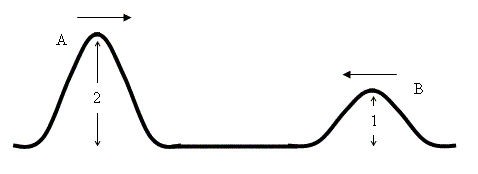
- Notice that wave A has an amplitude of 2, while wave B has an amplitude of 1.
- Both of the wave pulses are erect, so we say that they have positive values for amplitudes.
- As they come together in the middle, both of them are pulling particles of the medium upwards…
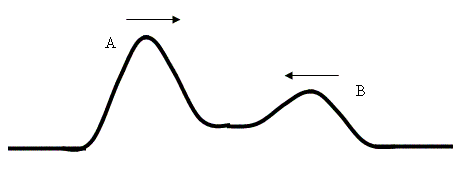
- When they are directly over each other, they are both shoving particles up together, so the two waves become one big wave with an amplitude of 3 for an instant of time.
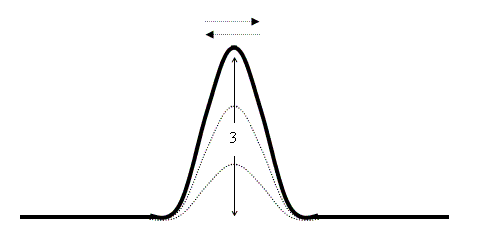
- They are still two separate waves, they just happen to be in the same spot at the same time.
- Afterwards, they will continue moving on and look exactly the way they looked before they hit each other.
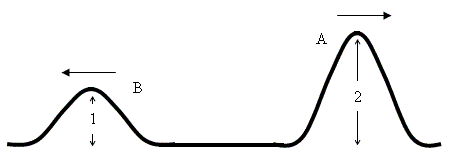
- This is an example of Constructive Interference.
- The two waves interfered with each other, but did it in such a way that they constructed something bigger than either of them alone.
We usually think of things that are hitting each other as destroying themselves permanently.
- This is not the case for waves, since the waves themselves are not made of matter, they only travel through matter.
- Waves might temporarily “destroy” each other, but as soon as they pass each other they will go back to their original appearance.
Example 2: The following two wave pulses are going to collide. Sketch what will happen.
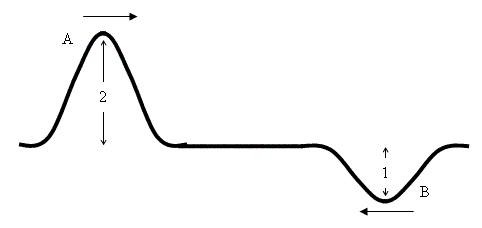
- Notice that A and B are still the same amplitude, but now B is inverted.
- As they pass over each other they would look like this…
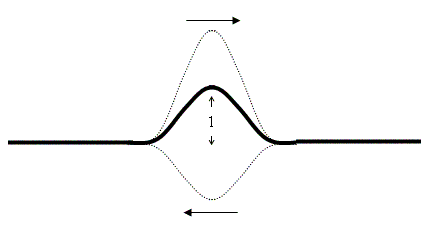
- For a moment the two wave pulses become one smaller wave pulse with an amplitude of (+2 + -1 = +1) positive one.
- As soon as they have passed each other…
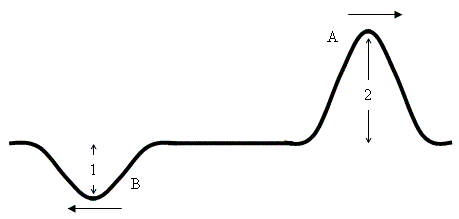
- Since the two waves together are smaller than they would be on there own, we call this Destructive Interference.